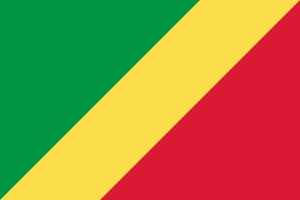Difference between revisions of "Language/Lingala/Culture/Arts-and-Crafts"
m (Quick edit) |
m (Quick edit) |
||
| Line 1: | Line 1: | ||
<span pgnav> | |||
{| class="wikitable pg_template_nav" | |||
|[[Language/Lingala/Culture/Traditional-Foods|◀️ Traditional Foods — Previous Lesson]] | |||
|[[Language/Lingala/Vocabulary/Common-Professions|Next Lesson — Common Professions ▶️]] | |||
|} | |||
</span> | |||
{{Lingala-Page-Top}} | {{Lingala-Page-Top}} | ||
| Line 124: | Line 131: | ||
{{Lingala-Page-Bottom}} | {{Lingala-Page-Bottom}} | ||
<span links></span> | <span links></span> | ||
<span pgnav> | |||
{| class="wikitable pg_template_nav" | |||
|[[Language/Lingala/Culture/Traditional-Foods|◀️ Traditional Foods — Previous Lesson]] | |||
|[[Language/Lingala/Vocabulary/Common-Professions|Next Lesson — Common Professions ▶️]] | |||
|} | |||
</span> | |||
Revision as of 22:26, 2 April 2023
| ◀️ Traditional Foods — Previous Lesson | Next Lesson — Common Professions ▶️ |
Lingala culture is known for its vibrant and diverse arts and crafts. From intricate wood carvings to colorful textiles, Lingala art is a celebration of creativity and tradition. In this lesson, we will explore some of the most popular arts and crafts in Lingala culture, including pottery, weaving, and wood carving.
Once you've mastered this lesson, take a look at these related pages: Traditional Foods & Traditional Music and Dance.
Pottery
The art of pottery has a rich history in Lingala culture, dating back thousands of years. Traditionally, women were the primary potters, creating beautiful vessels for daily use or special occasions. Today, pottery remains an important art form in Lingala, with many artisans using traditional techniques to create functional and decorative pieces.
One of the most famous types of Lingala pottery is the "Molobo," a large, hand-built pot used for cooking traditional dishes. Molobos are made from clay dug from the riverbanks and are often decorated with intricate designs or carved patterns. Other popular forms of pottery include bowls, jars, and pots, many of which feature stunning geometric or abstract designs.
Vocabulary
Here are some Lingala words related to pottery:
| Lingala | Pronunciation | English |
|---|---|---|
| tinda | tin-dah | pot |
| molobo | moh-loh-boh | large cooking pot |
| ndumba | ddoom-bah | jar or vase |
| lúli | doo-lee | bowl |
| kobelela | koh-beh-leh-lah | to shape or mold |
| libumbu | lee-boom-boo | clay |
Weaving
Weaving is another important art form in Lingala culture. Traditionally, weaving was done by men, who used locally-grown fibers to create intricate textiles for clothing and household items. Today, many Lingala weavers use the same techniques as their ancestors, creating beautiful pieces that reflect the region's natural beauty and vibrant culture.
One of the most famous Lingala textiles is the "Kuba cloth," a handwoven fabric made from raffia palm leaves. Kuba cloth is known for its intricate designs and patterns, often featuring geometric shapes or elaborate symbols. Other types of Lingala weaving include basketry, mat-making, and rug-making, all of which showcase the region's rich artistic traditions.
Vocabulary
Here are some Lingala words related to weaving:
| Lingala | Pronunciation | English |
|---|---|---|
| mukaná | moo-kah-nah | weaver |
| nkébé | nkeh-beh | basket |
| mvumba | mm-voom-bah | mat |
| tapis | tah-pees | rug |
| mboké | mm-boh-keh | loom |
| mputulu | mm-poo-too-loo | shuttle |
Wood Carving
Wood carving is one of the oldest and most cherished art forms in Lingala culture. Traditionally, wood carvings were used to create masks, statues, and other ceremonial objects. Today, many Lingala artisans continue to use traditional techniques to carve intricate designs and sculptures from local woods.
One of the most famous Lingala wood carvings is the "Ngil mask," a highly-stylized mask used in initiation ceremonies for young boys. Ngil masks are known for their intricate details, angular features, and dramatic expressions. Other popular forms of Lingala wood carving include animal sculptures, totem poles, and decorative boxes, all of which showcase the region's deep artistic legacy.
Vocabulary
Here are some Lingala words related to wood carving:
| Lingala | Pronunciation | English |
|---|---|---|
| molúsi | moh-loo-see | sculptor |
| akáli | ah-kah-lee | carving knife |
| likébé | lee-keh-beh | totem pole |
| bimba | mm-beem-bah | animal sculpture |
| ndwá | ndwah | mask |
| muéle | moo-eh-leh | wood |
Conclusion
In conclusion, the arts and crafts of Lingala culture are a reflection of its rich heritage, creativity, and artistic expression. From pottery to weaving to wood carving, these traditions have survived and evolved throughout the centuries, bringing beauty and meaning to people's lives. We hope you enjoyed learning about these unique art forms and the Lingala vocabulary that goes along with them.
Finished this lesson? Check out these related lessons: New gifts & Festivals and Celebrations.
Other Lessons
| ◀️ Traditional Foods — Previous Lesson | Next Lesson — Common Professions ▶️ |
